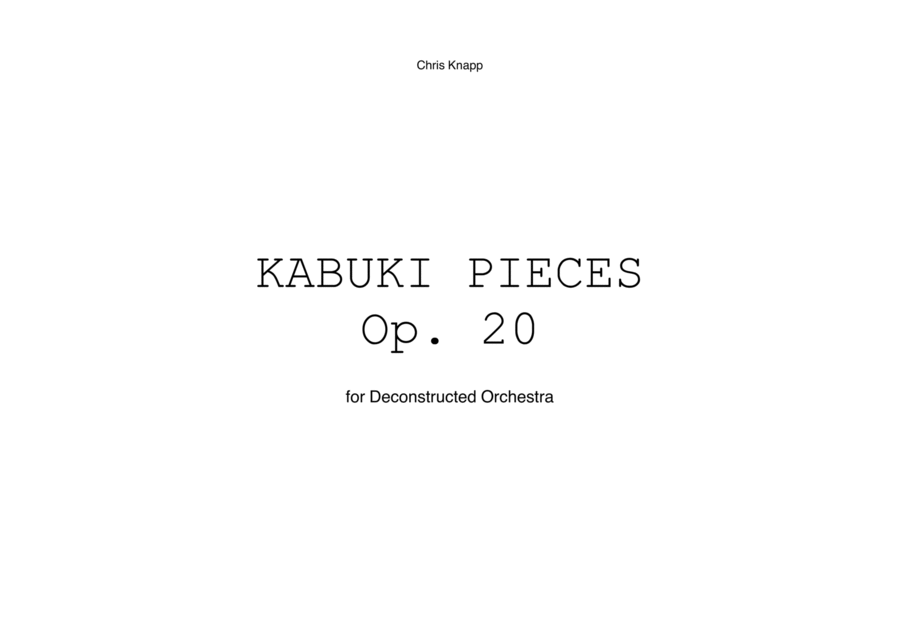Full Orchestra - Level 5 - Digital Download SKU: A0.1373704 Composed by Chris Knapp. 21st Century,Classical,Contemporary. 52 pages. Chris Knapp #958094. Published by Chris Knapp (A0.1373704). Kabuki pieces takes influence and inspiration from Japanese Kabuki theatre productions. In this work, the main aspects of Kabuki theatre are explored through the 'deconstructed' Orchestra. Kabuki theatre employs the principles of jo-ha-kyu which helps sets the pace for a dramatic play. Jo-ha-kyustates that a play should start slow, get quicker and end fast. Kabuki employs this technique over a series of 5 acts, hence this composition uses 5 movements and the pace of the work as a whole speeds up as it moves through.1. Introduction - Like with all good pieces of theatre, the first act sets the scene and establishes characters. In this compositon, the scene is set by the Cello accompanied by a selection of percussion (a characteristic trait of Kabuki theatre).2. Battle #1 - In Kabuki theatre there are always a number of battles, these usually occur during the 2nd and 4th acts. This composition similarly mimics the chaos of a battle and features the Woodwind section.3. Tragedy - During the 3rd act, a Tragedy or emotional event usually occurs, thus this composition hopes to mirror that with an emotional outpouring of melodic ideas introducing the Brass.4. Battle #2 - In the 2nd battle of this work, the feature is placed more on the Xylophone who takes a solo role and sets out a frantic tune which provides the basis for a Fugue of sorts picked up by the Strings.5. Conclusion - The conclusion to most Kabuki plays are satisfying and short, this is mirrored by the very brief conclusion to this work.
